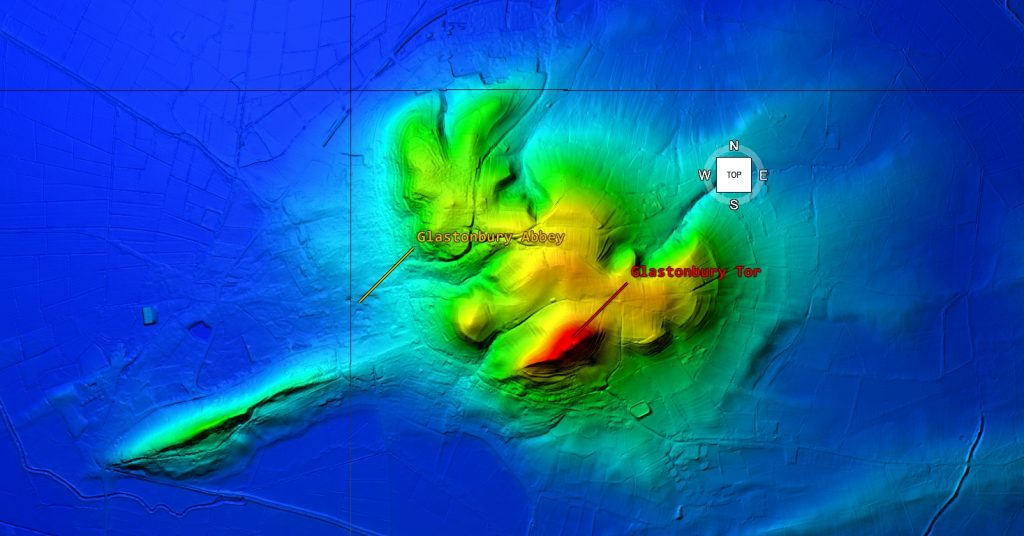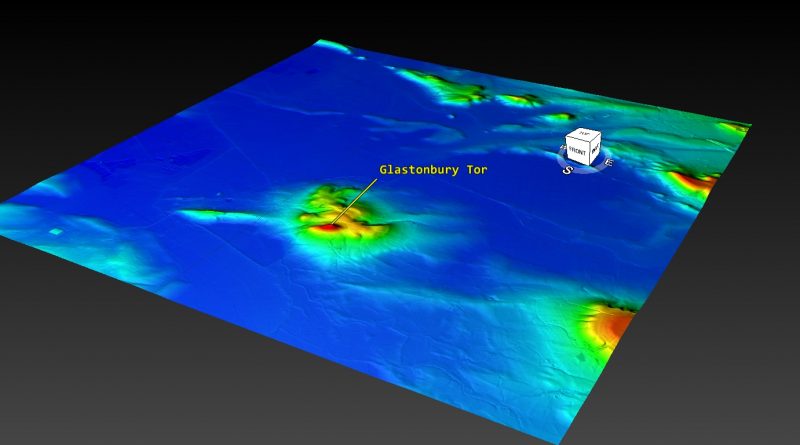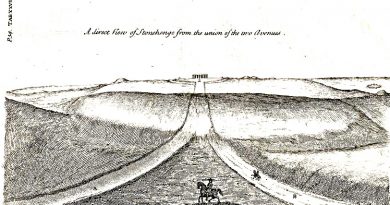The Lost Island of Avalon – revealed
Using the most effective archaeological tool available today (LiDAR), we can peel back the landscape and show how it used to look in the past and reveal – the lost Island of Avalon.
Avalon, literally meaning “the isle of fruit [or apple] trees”; sometimes written Avallon or Avilion) is a legendary island featured in the Arthurian legend. It first appears in Geoffrey of Monmouth’s 1136 Historia Regum Britanniae (“The History of the Kings of Britain”) as the place where King Arthur’s sword Excalibur was forged and later where Arthur was taken to recover from being gravely wounded at the Battle of Camlann. Since then, the island has become a symbol of Arthurian mythology, similar to Arthur’s castle Camelot.

Avalon was associated with mystical practices and figures such as Morgan le Fay from an early date. It is often identified as the former island of Glastonbury Tor, which the later English variant of the legend made the place where King Arthur was taken to his final rest. However some traditions believe that Arthur had never really died but would lead his people against their enemies. Many other alternative locations of Avalon have been claimed or proposed as well.
The legend has been associated with Glastonbury and particularly the Tor, but to date, the tale is about an island has led to speculation of other locations. My ‘Post-Glacial Flooding Hypothesis’ has now brought this legend and the association with Glastonbury back to life as our new LiDAR map of the Mesolithic to the Bronze Age landscape shows that this area was affected by the higher water table, which made Glastonbury an island.

We can now take you on a journey into the past to when the mysterious Island of Avalon was a reality and not just a myth!
This is a journey through time looking at the prehistoric Glastonbury Landscape based on the new third (2020) edition book of the best seller – that contains conclusive and extended evidence of Robert John Langdon’s hypothesis that rivers of the past were higher than today – which changes the history of not only Britain but the world. In his first book of the trilogy, ‘The Post-Glacial Hypothesis’, Langdon discovered that Britain was flooded directly after the last Ice Age, which remained waterlogged into the Holocene period through raised river levels only in Britain, but worldwide.

In this second book of the series ‘The Stonehenge Enigma’, he also shows that a new civilisation is known to archaeologists as the ‘megalithic builders’ adapted to this landscape to build sites like Stonehenge, Avebury, Woodhenge and Old Sarum, where carbon dating has now shown that these sites were constructed about five thousand years earlier than previously believed. Within the trilogy ‘Prehistoric Britain’, Langdon looks at Britain’s anthropology, archaeology and landscape and the attributes and engineering skills of the builders of these megalithic structures.
Including finding and dating the original bluestones of Stonehenge Phase I from the quarry of Craig-Rhos-Y-Felin in Wales, five thousand year earlier than current archaeological theory and how this civilisation used the sites surrounding Stonehenge at a time of these raised river levels. This unique insight into how the prehistoric world looked in the ‘Mesolithic Period’ allows Langdon to explain archaeological mysteries that have confused archaeologists since the beginning of science and enable us to make sense of these sites, allowing us to understand them their function for this society for the first time.
With over thirty ‘proofs’ of his hypothesis and one hundred and twenty-five, peer-reviewed references – Langdon uses existing excavation findings and carbon dating to forward a new understanding of the environment and our ancient society, which consequently rewrites our history books and allows us to find more conclusive and persuasive evidence which is currently trapped in our landscape, ready to be discovered by future students of archaeology. Articles on this Trilogy and an Active Facebook Group (with thousands of followers) where you can leave comments and get feedback can be found at:
Articles: https://prehistoric-britain.co.uk/
Facebook Group: https://www.facebook.com/groups/prehistoricbritain
Further Reading
For information about British Prehistory, visit www.prehistoric-britain.co.uk for the most extensive archaeology blogs and investigations collection, including modern LiDAR reports. This site also includes extracts and articles from the Robert John Langdon Trilogy about Britain in the Prehistoric period, including titles such as The Stonehenge Enigma, Dawn of the Lost Civilisation and the ultimate proof of Post Glacial Flooding and the landscape we see today.
Robert John Langdon has also created a YouTube web channel with over 100 investigations and video documentaries to support his classic trilogy (Prehistoric Britain). He has also released a collection of strange coincidences that he calls ‘13 Things that Don’t Make Sense in History’ and his recent discovery of a lost Stone Avenue at Avebury in Wiltshire called ‘Silbury Avenue – the Lost Stone Avenue’.
Langdon has also produced a series of ‘shorts’, which are extracts from his main body of books:
For active discussions on the findings of the TRILOGY and recent LiDAR investigations that are published on our WEBSITE, you can join our and leave a message or join the debate on our Facebook Group.




